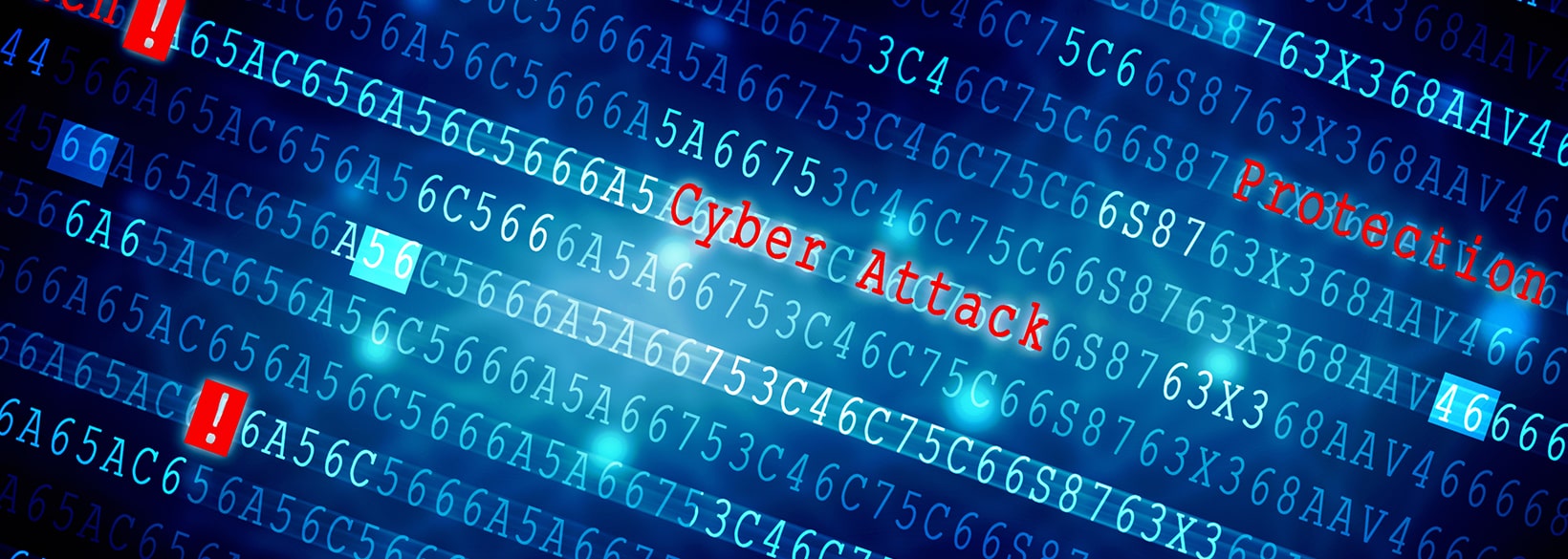Cybersecurity attacks become more sophisticated each year. As they evolve, businesses must take a proactive approach to security. Investing in cybersecurity, educating employees on emerging threats, conducting regular security assessments, and thoroughly vetting vendors are essential strategies for staying protected. By staying informed about the most common cyber attacks and implementing security measures or managed data protection, businesses can better navigate the complex and ever-changing cybersecurity landscape.
AI-Driven Cyberattacks
Artificial intelligence (AI) and machine learning (ML) are becoming essential tools for cybercriminals, enabling them to automate and enhance attacks. In 2025, the accessibility of AI-powered tools is expected to grow, making cyber threats more sophisticated and complex to detect. Attackers can leverage AI to scan networks for vulnerabilities, craft highly personalized phishing emails, and adapt their strategies in real time to bypass security measures.
These AI-driven threats pose a significant challenge, particularly for small and medium-sized businesses (SMBs), which may lack the resources for advanced detection systems. Traditional signature-based security solutions rely on recognizing known threat patterns and are often ineffective against evolving AI-generated attacks.
Supply Chain Attacks
Cybercriminals increasingly target businesses by exploiting vulnerabilities in their third-party vendors and service providers. Supply chain attacks often begin with a breach of smaller, less secure vendors, providing attackers a backdoor into larger corporate networks. Since many SMBs integrate with enterprise systems, they become an attractive entry point, putting themselves and their partners at risk.
These attacks often involve injecting malware into legitimate software updates or services, making them particularly difficult to detect. Given the limited cybersecurity resources many SMBs have, monitoring vendor security and implementing strict access controls are critical steps in mitigating supply chain threats.
Deepfake Scams and Social Engineering
Deepfake technology, which uses AI to create highly realistic videos and audio recordings, is rapidly advancing. In 2025, deepfake scams are expected to escalate, allowing cybercriminals to impersonate company executives or trusted contacts in a convincing way. These sophisticated social engineering attacks can deceive employees into transferring funds, sharing sensitive information, or granting unauthorized access to internal systems.
Because these scams exploit trust, they are particularly dangerous. Employees who believe they are interacting with senior executives are less likely to question suspicious requests, making these attacks highly effective. Businesses must implement strong verification processes to counter this growing threat.
IoT-Based Threats
The growing reliance on Internet of Things (IoT) devices introduces new cybersecurity risks. SMBs frequently use IoT technology for security systems, environmental controls, and smart appliances, but many of these devices lack robust security protections. Cybercriminals can exploit unpatched or unsecured IoT devices to create botnets, launch distributed denial-of-service (DDoS) attacks, or gain unauthorized access to business networks.
With the increasing adoption of connected devices, businesses must prioritize IoT security by keeping firmware updated, segmenting networks, and implementing strong authentication protocols.
Expanding Attack Surface Due to Remote Work
With remote and hybrid work models now the norm, the attack surface for cybercriminals continues to grow. Canadian businesses report that human error is a leading cause of cloud security incidents, and employees working from personal devices and home networks introduce additional vulnerabilities. These endpoints become prime targets for cyberattacks, increasing the risk of unauthorized access and breaches.
Insecure connections, lack of visibility, and inconsistent security practices further complicate efforts to maintain a secure remote work environment. To reduce exposure to threats, businesses must adopt comprehensive cybersecurity strategies, including multi-factor authentication, endpoint protection, and employee training.
What Makes an Organization Vulnerable to Cyberattacks?
Several factors can make a company vulnerable to cyberattacks. Cybercriminals often exploit weaknesses in an organization’s security infrastructure, human behaviours, and operational practices. Here are some key vulnerabilities:
- Outdated Software & Systems – Running outdated software, operating systems, or applications can leave vulnerabilities unpatched, as attackers are aware of known security flaws that can be exploited.
- Weak Passwords – Poor password practices, such as using weak passwords or reusing passwords across accounts, make it easier for attackers to gain unauthorized access.
- Lack of Employee Training – Insufficient cybersecurity awareness and training can lead employees to fall for phishing scams, click on malicious links, or unknowingly download malware.
- Insufficient Security Measures – Inadequate firewalls, intrusion detection systems, and antivirus software leave gaps in an organization’s defence mechanisms.
- Remote Work – The rise of remote work can introduce security risks if not properly managed, leading to unsecured devices accessing company networks and data.
- Third-party Risks – Partnering with third-party vendors who have weak security measures can expose an organization’s network to potential breaches.
- Lack of Data Encryption – Unencrypted sensitive data is an easy target for attackers who gain access to it.
- Phishing and Social Engineering – Cybercriminals use clever tactics to trick employees into revealing sensitive information or downloading malware.
- Inadequate Incident Response Plan – Without a well-defined plan for handling security incidents, companies can struggle to contain and mitigate attacks effectively.
- Insider Threats – Malicious or negligent actions by employees or contractors can lead to data breaches.
- Failure to Regularly Update and Patch – Neglecting to apply security updates and patches in a timely manner can leave vulnerabilities open to exploitation.
- Poor Network Segmentation – Not segmenting networks properly can allow attackers to move laterally across an organization’s systems once they gain initial access.
- Lack of Monitoring and Logging – Failing to monitor network traffic and maintain comprehensive logs makes it difficult to detect and respond to suspicious activities.
- Over-reliance on Compliance – Focusing solely on meeting regulatory requirements might not fully address all security vulnerabilities.
- Lack of Cybersecurity Culture – When cybersecurity isn’t a priority within an organization’s culture, employees might not take necessary precautions seriously.
- A Complex IT Infrastructure – A complex and interconnected IT environment can create blind spots that attackers can exploit.
How to Protect Your Organization From Increasing Cyberattack Risks
With cyber threats evolving rapidly, implementing a robust cybersecurity strategy is essential to protect sensitive data, maintain operational continuity, and preserve your reputation. Here’s a comprehensive guide on how to defend your organization against cyberattacks, including the role of Managed IT Services.
1. Educate Your Workforce
Invest in cybersecurity training for all employees. Teach them about phishing, social engineering, and best practices for password management. An educated workforce is your first line of defence.
2. Hire Managed IT Services
One of the most effective ways to protect your organization is by leveraging Managed IT Services. These services provide continuous monitoring, threat detection, and rapid incident response. Managed IT Service providers stay up to date with the latest threats and security measures, ensuring your organization’s systems are always protected.
Benefits of Managed IT Services:
- 24/7 Monitoring – Managed IT Services providers monitor your network round-the-clock, detecting and addressing threats before they escalate.
- Proactive Threat Detection – They employ advanced tools to identify and mitigate potential threats, often before you’re even aware of them.
- Regular Updates and Patching – Managed IT Services ensure that your systems are always up to date with the latest security patches, minimizing vulnerabilities.
- Data Backup and Recovery – Managed IT Services include robust backup solutions, ensuring data recovery in the event of a breach.
- Expertise and Consultation – You gain access to a team of experienced cybersecurity professionals who can provide guidance on best practices and security strategies.
3. Implement Strong Access Controls
Enforce strict access controls to limit employees’ access to only the data and systems they require for their roles. Multi-factor authentication (MFA) adds an extra layer of security.
4. Regularly Update and Patch
Keep all software, operating systems, and applications up to date. Cybercriminals often exploit known vulnerabilities in outdated software.
5. Use Robust Antivirus and Firewalls
Deploy up-to-date antivirus software and firewalls to detect and block malicious activities. Regularly update these tools to stay ahead of new threats.
6. Data Encryption
Implement end-to-end encryption for sensitive data to ensure that even if it’s intercepted, it remains unreadable to unauthorized individuals.
7. Backup Data Regularly
Frequently backup critical data and systems to secure locations. In case of a cyberattack, you’ll have the ability to restore operations without paying a ransom.
8. Develop an Incident Response Plan
Prepare a well-defined plan that outlines steps to take in the event of a cyberattack. Assign roles and responsibilities to ensure a swift and effective response.
Partner With Ironclad TEK and Be Prepared
Effective cybersecurity procedures are essential in today’s economy. However, in 2025, businesses need to increase their focus on cyber resiliency. This goes beyond protection to include recovery and continuity after a cyberattack. At Ironclad TEK, we provide the services needed to protect your organization from malicious actors through Managed IT Services, like network management, managed virtualization, and data backup solutions. And we can protect your data with advanced security protocols by hosting it in our Tier 3 Data Centre.
And should your organization be compromised from a phishing scam or via a third-party vendor, we can help you resume operations and mitigate losses with effective disaster recovery solutions. We have the expertise you need to set yourself up for success. Contact us today!




